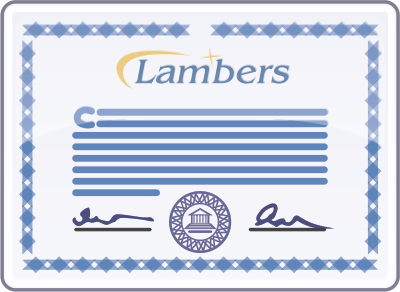The Lambers Payroll Training Course Series, presented by Vicki Lambert, is a comprehensive 17-course program designed for professionals handling payroll in small to medium-sized businesses. This series covers a wide range of topics essential for staying compliant and efficient in payroll management.
Each course qualifies for NASBA CPE, offering up to 35 hours of continuing education. After completing all seventeen parts and passing a short exam, participants will receive a ‘Payroll Training Course Series’ certificate, signifying their enhanced expertise in payroll management.
Payroll Training Course Series
(Course Objectives)
Forms W-2, W-4 and 941 for 2023: An Overview
- Explore the requirements for the Form W-4 for 2023
- Discover the laws and regulations that are required to be followed when completing a Form 941
- Recognize payroll’s responsibility relating to ensuring the form W-2 is processed correctly
Working from Here, There and Everywhere
- Explore the requirements for state and local income tax withholding
- Discover the laws and regulations for unemployment insurance that are required to be followed employees who work from home and for hybrid employees
- Recognize payroll’s responsibility relating to ensuring the correct wage and hour laws, garnishments and travel pay laws are followed
Employee or Independent Contractor? That is the Question!
- Define the requirements under the IRS regulations that are used to classify workers as independent contractors.
- Identify the requirements that must be met to classify a worker as an independent contractor under the federal wage and hour laws.
- Explain how to use the IRS Form SS-8 to assist in making the proper classification for a worker.
- Identify the state requirements for proper classification of workers under the ABC test.
- Explain the penalties that can be assessed for misclassifying a worker.
- Identify the IRS program that can assist an employer in mitigating the penalties for misclassifying a worker.
Exempt or Nonexempt? That is the Question!
- Explain the terms exempt, nonexempt and salary basis.
- Define the requirements under the FLSA regulations that are used to classify workers as exempt.
- Explain each category of exempt employee and the job duties requirements that must be met.
- Identify the requirements that must be met to properly pay an exempt employee on a salary basis.
Wage and Hour Law Compliance in 2023: It’s More Than Just Calculating Overtime
- Define the wage and hour terms work week, work day, hours worked, overtime and minimum wage
- Contrast the difference between federal and state laws and when which law take priority
- Compute overtime correctly under the FLSA when no other factors are present
- Compute overtime correctly under the FLSA when such factors as nondiscretionary bonuses, commissions, shift differential, piece work or other factors are being paid to the employee
- Explain how to track hours worked to pay the employee correctly including rounding of hours and what is considered “de minimis” timekeeping.
- Calculated the weighted average of pay rates to correctly determine the overtime due to an employee who is working two or more rates in a work week.
- Examine the requirements for meal and rest periods under state laws
- Discuss the requirements for how often to pay employees and by what method under state laws
Deducting from an Employee’s Paycheck: When Can it Be Done?
- Explore which taxes are mandatory, which are a courtesy and which ones the employee controls
- Recognize when federal and state wage and hour laws permit recouping overpayments to employees
- Discover the limits that govern deducting for child support, tax levies and creditor garnishments as opposed to voluntary wage assignments
- Identify the rules and regulations for deducting for cash shortages and breakages
Child Support: The Laws, Rules and Regulations for Proper Handling in the Payroll Department
- Explore the specific requirements for child support including deduction limits, deadlines, filing procedures, administrative fees and penalties/fines for violations under both federal and state law
- Identify the requirements for processing medical support notices
- Identify which garnishment has priority when an employee has current support orders, medical support notices and arrearages
- Discover how to handle terminated employees in regards to child support
- Recognize the differences between state requirements and federal requirements for child support
- Explore how to calculate withholding and prioritize the order of distribution when an employee has more than one type of garnishment
- Identify best practices for processing child support garnishments in the payroll department
- Discover the laws that govern the withholding and processing of child support including the Consumer Credit Protection Act (CCPA) and Uniform Interstate Family Support Act (UIFSA)
- Explore the requirements for calculating the amount of withholding for child support when an employee has one withholding order with or without arrearages
Abandoned Wages: How to Stay in Compliance When Reporting and Remitting
- Identify when wages are considered abandoned
- Explore the laws and regulations that cover unclaimed wages
- Recognize payroll’s responsibility relating to abandoned wages
- Discover the processes needed to correctly report and remit unclaimed wages
How to Handle Multistate Employees Tax Withholding and Related Issues Correctly
- Explore the various taxes required by different states including income tax, disability insurance and the plethora of local taxes that may apply to wages paid
- Discover how to determine state withholding liability
- Contrast the difference between a resident and a nonresident of a state and how that affects state income tax withholding
- Explore which states require the use of their own Withholding Allowance Certificate and which state allows either theirs or the Form W-4 to be used and which states do not have a form
- Identify which states follow the Internal Revenue Code and which version
- Explore the requirements for reporting wages for multistate employees on Form W-2
- Identify the four factors that are used to determine state unemployment insurance liability
- Identify the states that have reciprocal agreements and explore how those agreements affect taxation
Tax Levies and Creditor Garnishments: What Payroll Must Know to Stay in Compliance
- Explore the various types of tax levies and other garnishments
- Identify the federal requirements for each type of garnishment
- Discover how state requirements affect creditor garnishments and payday loans
- Explore the best practices for processing garnishment in the payroll department
Basic Payroll 101: Withholding, Depositing and Reporting Federal Taxes
- Recognize rules regarding paying and reporting FIT and FICA taxes
- Explore the payment and reporting of FUTA taxes
- Identify the requirements for deducting FICA taxes
- Explore the requirements for deducting federal income tax correctly
Payroll Overpayments: Handling them Correctly in 2023
- Discover federal wage and hour laws and their impact on recouping overpayments
- Identify IRS requirements on recouping overpayments in a current tax year
- Explore state wage and hour laws and their impact on recouping overpayments
- Recognize the requirements of recouping overpayments under IRS regulations in a subsequent tax year
Travel Pay: Learn the Rules of the Road for Paying an Employee Who Travels
- Explore travel pay requirements under the FLSA and state wage hour laws
- Discover payroll best practices for paying travel pay correctly
- Identify how travel pay affects overtime calculations and the travel pay differences for exempt and nonexempt employees
Terminated Employees: Getting the Final Check Right
- Explore the requirements that relate how federal and state wage and hour laws affect termination payments
- Discover how to properly handle deductions from final paychecks such as for missing tools, garnishments and overpaid vacation
- Recognize the year end and record retention concerns for final paychecks
- Explore how to handle deceased employees final paycheck
Paying Employees from Start to Finish and Everywhere in Between
- Recognize the frequency of wage payment rules
- Explore the paystub regulations state by state
- Discover the required or permitted lag time between closing the payroll and distributing the check
- Identify the payment methods permitted by state laws including cash, check, direct deposit and paycard
- Explore the requirements for paying terminating employees including whether or not to include accrued vacation pay
Calculating Overtime: How to Get it Right Every Time
- Explore the definitions that relate to the payment of overtime under the FLSA/Portal-to-Portal Act
- Discover how to calculate the regular rate of pay
- Identify how to track hours worked and the use of rounding practices
- Recognize when you must include a bonus in calculating your employee’s overtime pay
- Explore how to calculate overtime if a bonus covers more than one workweek
Fringe Benefits Blitz for 2023: Taxing & Reporting Fringe Benefits
- Explore the requirements that relate how federal and state wage and hour laws affect termination payments
- Discover how to properly handle deductions from final paychecks such as for missing tools, garnishments and overpaid vacation
- Recognize the year end and record retention concerns for final paychecks
- Explore how to handle deceased employees final paycheck



